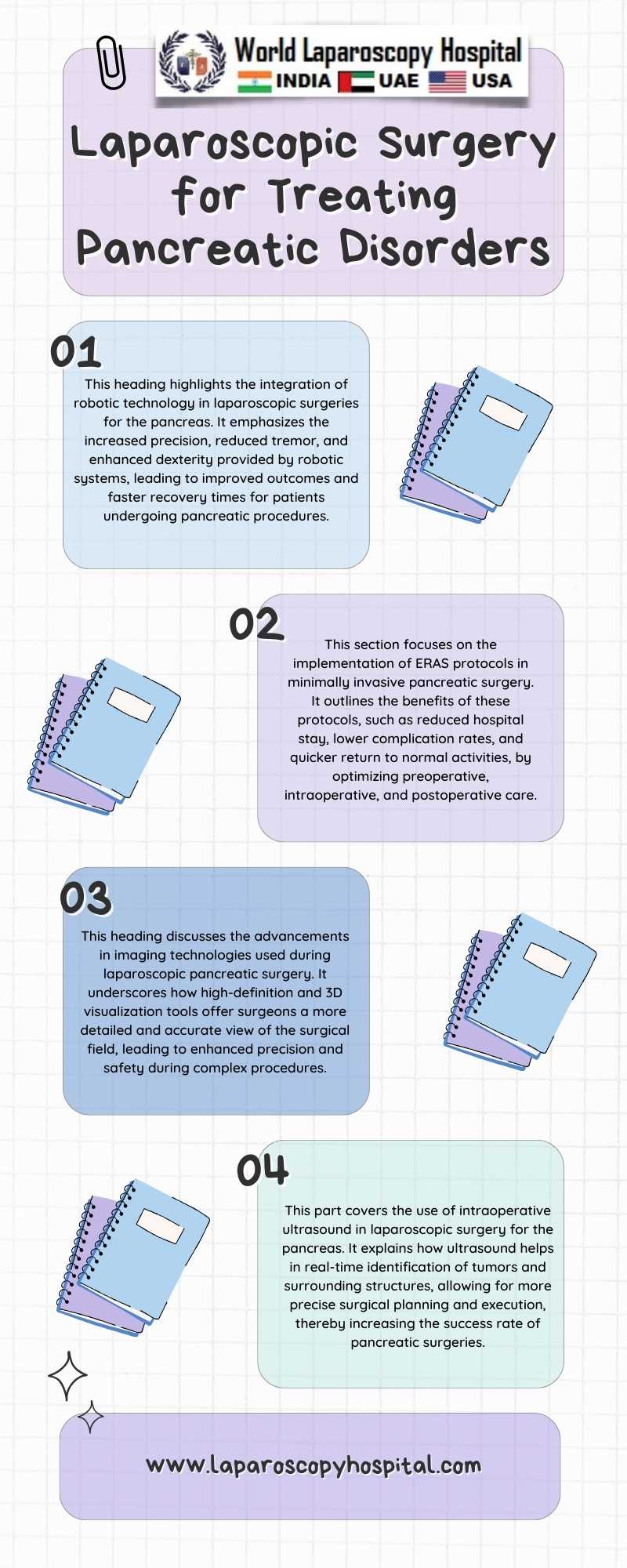Introduction
The landscape of surgical procedures has been revolutionized by the advent of minimally invasive techniques, particularly in the treatment of pancreatic disorders. Traditional open surgeries, which involve large incisions and longer recovery times, are increasingly being replaced by laparoscopic techniques. This essay delves into the evolution, benefits, challenges, and future prospects of laparoscopic surgery in the context of pancreatic disorders.

Evolution and Techniques
Laparoscopic surgery, also known as keyhole surgery, was initially met with skepticism due to the complexity of pancreatic anatomy and the technical challenges it posed. However, with technological advancements and increased surgeon expertise, laparoscopic procedures have become more feasible and effective. Key techniques in laparoscopic surgery for pancreatic disorders include laparoscopic pancreaticoduodenectomy, distal pancreatectomy, and enucleation of pancreatic tumors.
Benefits
The primary advantage of laparoscopic surgery is the reduction in trauma to the patient. Smaller incisions result in less pain, reduced scarring, and quicker recovery times. This minimally invasive approach also leads to a lower risk of postoperative complications, such as infections and hernias. Additionally, laparoscopic surgery provides enhanced visualization for the surgeon due to magnified and high-definition views of the operative field, leading to potentially more precise and safer procedures.
Challenges
Despite its benefits, laparoscopic surgery for pancreatic disorders poses several challenges. The pancreas' location deep in the abdomen and its proximity to major blood vessels make these procedures technically demanding. The risk of pancreatic fistula, a complication where pancreatic fluid leaks into the abdominal cavity, remains a significant concern. Furthermore, the steep learning curve associated with these techniques limits their widespread adoption.
Outcomes and Patient Selection
Studies have shown that laparoscopic surgery for pancreatic disorders can have outcomes comparable to open surgery, with some suggesting even better results in terms of hospital stay and postoperative recovery. However, patient selection is crucial. These procedures are best suited for patients with benign or low-grade malignant tumors and those without extensive involvement of surrounding vessels.
Future Prospects
The future of laparoscopic surgery in treating pancreatic disorders is promising, with ongoing advancements in robotic surgery and imaging techniques. Robotic-assisted laparoscopic surgery, in particular, offers enhanced dexterity and precision, potentially overcoming some limitations of traditional laparoscopy. Research into better preoperative imaging and intraoperative navigation systems could further improve surgical outcomes and expand the indications for laparoscopic pancreatic surgery.
Conclusion
Laparoscopic surgery for pancreatic disorders represents a significant advancement in surgical techniques, offering benefits of reduced morbidity and faster recovery while maintaining, and in some cases improving, surgical outcomes. As technology advances and surgeon expertise grows, these minimally invasive techniques are likely to become more prevalent and effective, offering new hope and options for patients suffering from pancreatic disorders.